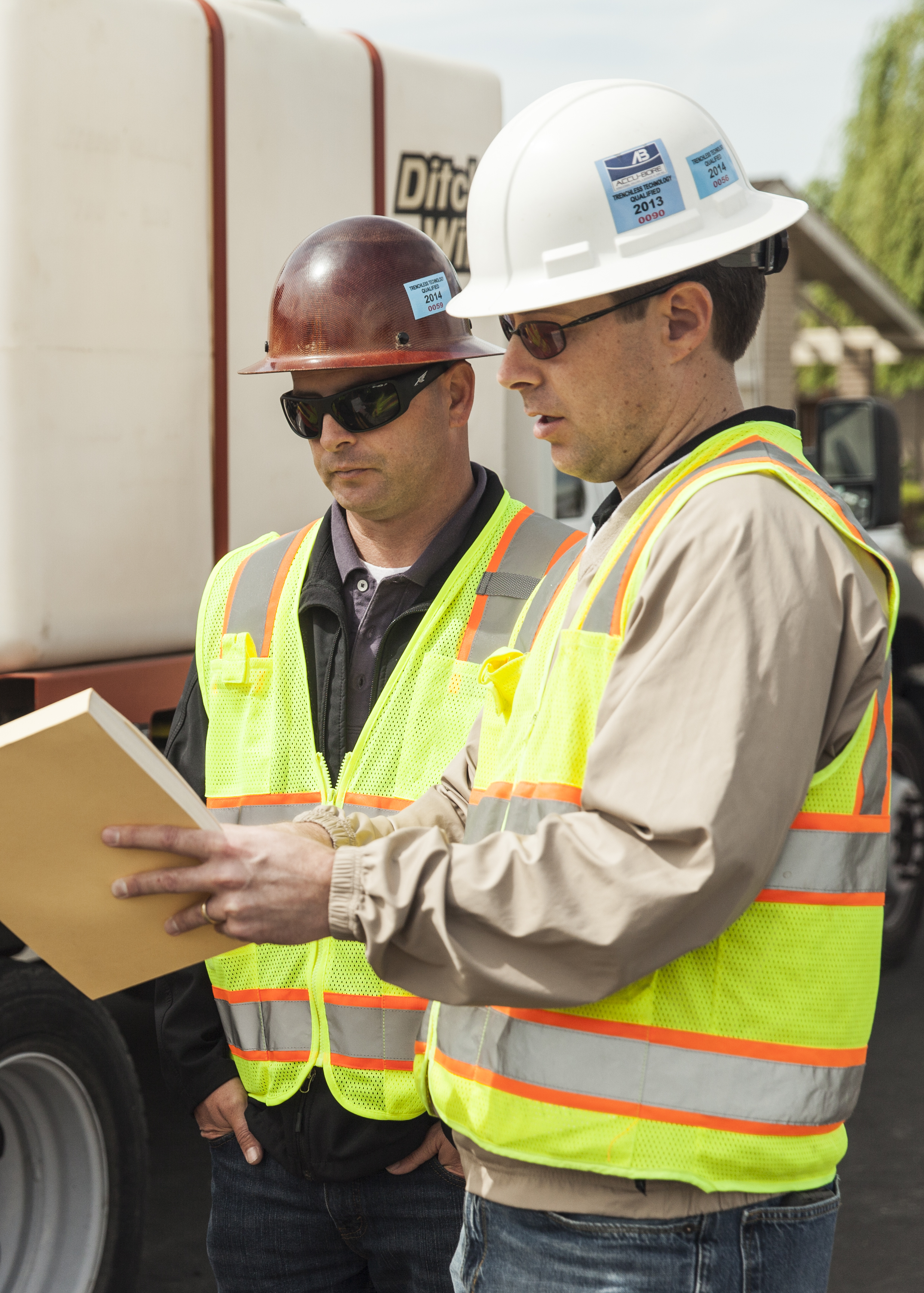May 2015, Vol 242, No. 5
Features
Accu-Bore Meets Time-Sensitive HDD Project Head On

The job began as a relatively straightforward directionally drilled creek crossing to install 600 feet of steel gas pipe. However, a change in the size of pipe, unexpected site restrictions, difficult soil conditions, and limited hours to work made this project far from routine.
It was exactly the type of project suited for California contractor Accu-Bore Directional Drilling, a horizontal directional drilling contractor that also provides engineering services and complete turnkey and design-build capabilities.
The creek crossing originally was a 620-foot project to replace a 6,693-foot segment of old distribution line in Graton, a rural area 60 miles north of San Francisco. The project owner was Pacific Gas and Electric (PG&E), a long-time client of Accu-Bore.
PG&E’s plan was to open cut everything but the creek crossing, which is in an environmentally sensitive area, said Erich Metzger, Accu-Bore general superintendent of operations.
“However,” said Metzger, “after consulting with PG&E about the entire project, we agreed it made sense to use horizontal directional drilling (HDD) to install another 3,375 feet of the project. This was done to speed production, minimize the environmental impact and reduce restoration.”
Before construction started, PG&E determined that the size of the casing pipe needed to be enlarged from 10 to 12 inches in diameter.
“That changed the parameters of the creek bore,” said Metzger. “Because of our established relationship with PG&E, the company was comfortable with us redesigning the bore.
“Michael Robirds, Accu-Bore president and CEO, redesigned the bore, adding greater setbacks for the drill unit to provide the necessary grade to attain the required depth of below the creek bottom. The length of the bore was doubled to 1,200 feet,” Metzger explained.
The deadline to complete the installation was Dec. 24.
On Dec. 13, a Ditch Witch® 40,000-pound pullback JT4020 AT drill unit launched the pilot hole from a set-up spot on the highway south of the creek. The hydraulically driven dual pipe AT (all terrain) drilling system is designed for rock and hard formations. Patrick Lannoo was crew chief.
As work got underway, PG&E and Accu-Bore were notified by California Department of Transportation officials that work had to be limited to between 9 a.m. and 3 p.m. because both lanes of the two-lane state highway needed to be open for morning and afternoon work traffic. With an already tight deadline, this unexpected news would clearly complicate the project.
Soil at the launch point was chunky rock. Under the creek, it became soft and difficult to steer. Drilling fluids escaping from the bore hole had to be contained to prevent it from spreading to the environmentally protected area. Accu-Bore kept its 120-barrel vacuum tanker onsite, along with another sub-hauler. The disposal site was about 80 miles away.
The pilot hole was completed in one shot in four days. The first reaming pass was started Dec. 16, using the JT4020 AT that drilled the pilot hole.
“After several passes, it became clear that in these soil conditions multiple reaming passes would take far too long with this equipment to meet the Dec. 24 deadline,” said Metzger. “And we knew in these soil conditions the hole would not stay open until after the Christmas holiday – pipe had to go in the ground immediately. A larger machine was needed.”
Accu-Bore had a 100,000-pound pullback JT100 working south of Los Angeles. So a decision was made to pull it off that job and bring to the creek crossing site to complete backreaming and pull in the new pipe.
“We had to demobilize the JT100 and bring it 600 miles north, and swap it out with the smaller machine,” Metzger said. “On Dec. 20 we began reaming with an 18-inch hole opener. We had to complete reaming and pipe installation and be off the road in four days.”
To help speed up work, Caltrans had allowed Accu-Bore to begin work on Sunday, rather than Monday morning.
During back reaming, PG&E crews staged pipe on the highway right-of-way adjacent to the pilot hole exit pit. Pipe was assembled in three strings of 360 feet each.
“We began pulling in the casing at midnight on Dec. 24, completed it by 4 a.m., and cleared the work area by 6:30 a.m.,” said Metzger. “Our crew came back after the holiday to complete the demobilization.”
In addition to the creek crossing, seven other bores and pullbacks of about 500 feet each were made on the project.
Metzger said the project provided a good example of solutions-based delivery of services. “If a problem surfaces, the solution is not to just throw resources at it, but employ the right resources. In order to work, there must be mutual trust, and that enables both parties to achieve shared goals of finishing on time and on budget, no matter what contingencies must be used to overcome unexpected situations.”
[inline:JT2040 1.png]





Comments